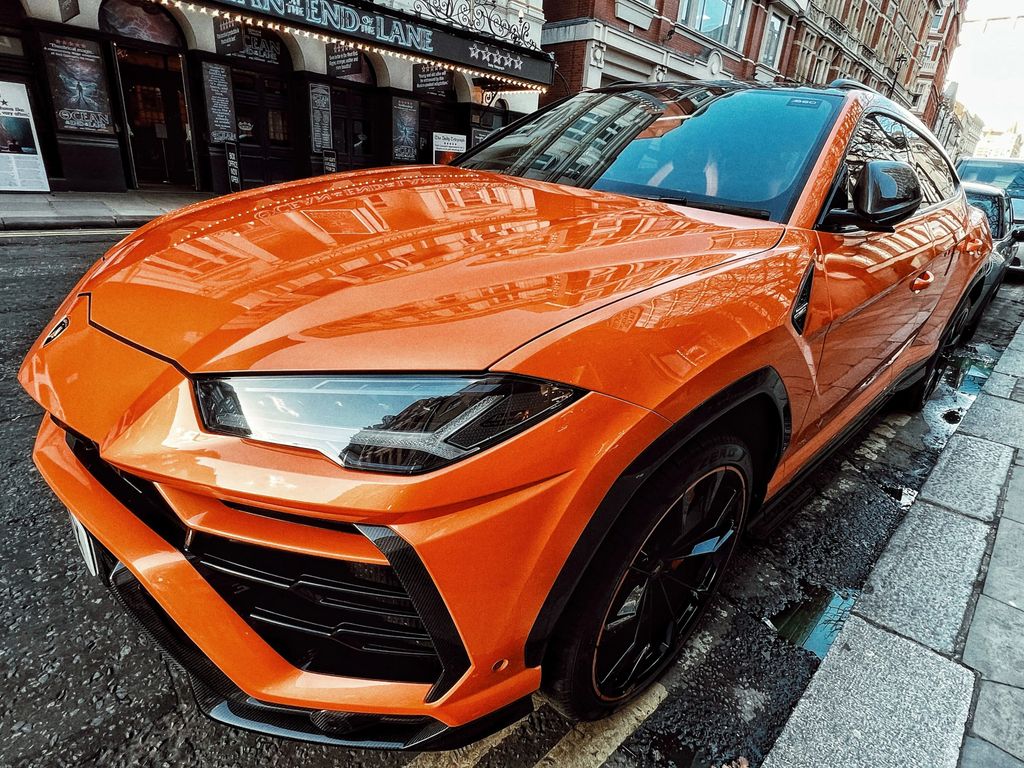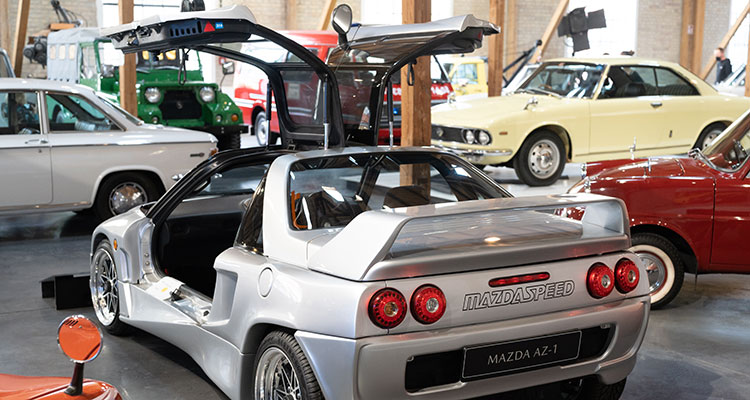
Alright, gearheads and automotive aficionados, gather ’round! There’s nothing quite like the heartbreak of seeing a beloved model driven into the sunset, consigned to the history books, or worse, replaced by something utterly forgettable. We’ve all been there, lamenting the loss of an icon, wondering if we’d ever see its glorious return. But sometimes, just sometimes, the universe smiles upon us, and those cherished nameplates rise from the ashes, reborn and ready to roar once more!
This isn’t just about bringing back old metal; it’s about reigniting a spark, recapturing a spirit, and proving that some vehicles are simply too important, too beloved, or too darn cool to stay gone. A recent wave of retro nostalgia has swept through the industry, proving that sustained interest from enthusiasts absolutely has the power to bring revered cars back from the dead. It’s a trend we are completely here for, and honestly, we hope it never stops!
So, buckle up, because we’re taking a thrilling ride through some of the most spectacular automotive resurrections. We’re talking about cars that made a statement, disappeared, and then came back swinging, often better than ever, always capturing our hearts. Let’s kick off this glorious journey into the land of reborn legends, starting with a true American hero that made a comeback for the ages!
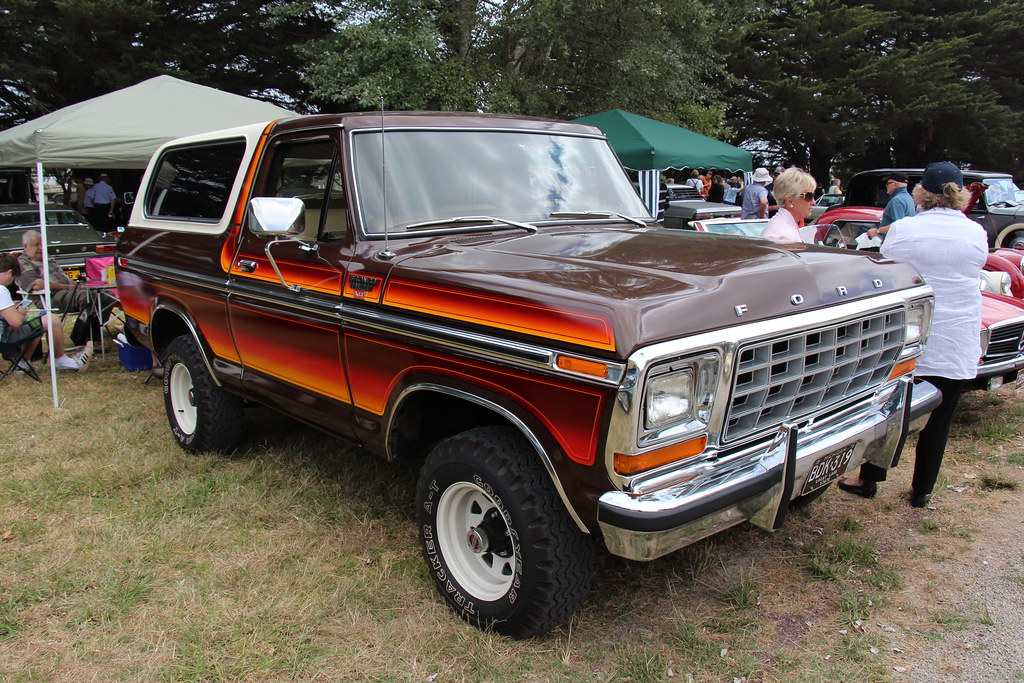
1. **Ford Bronco**Few recent retro nameplate resurrections have been as successful as the Ford Bronco, and frankly, we’re still buzzing about it! Ford absolutely nailed the strategy here, leaning heavily into the nostalgia for older generations of the car. They didn’t just slap a new badge on an existing platform; they created an old-school look that paid homage to its heritage, even hiding clever Easter eggs around the vehicle that referenced its storied history. It was a masterclass in understanding what enthusiasts truly wanted.
And did it work? Oh, you bet it did! The Blue Oval sold more than 116,000 examples of the Bronco in 2024 alone, a testament to its widespread appeal and the sheer excitement it generated. This isn’t just about moving units; it’s about connecting with a passionate audience. Plus, the model has racked up strong reviews from outlets, including SlashGear, cementing its place as a critical darling and a commercial smash hit.
Now, let’s put it in perspective. In Europe, Ford tried a similar trick with another retro nameplate, its highly regarded Capri sports car. But the revived Capri wasn’t a sports car at all; it was ‘an uninspiring electric crossover.’ What a tragedy! Buyers weren’t convinced, and ‘only weeks after production of the car began in Germany, Ford scaled back Capri production and slashed shifts for factory workers.’ The Bronco, thankfully, carries a lot more of the spirit of its predecessors than the ill-fated Capri, and that’s precisely why it became such a major success story for Ford.
Looking ahead, there’s always the question of where the next-generation Bronco stands in the brand’s transition to electric powertrains. But given the undeniable demand from buyers and the incredible success of its current iteration, it seems highly unlikely that Ford will want to mess with a good thing. The Bronco is back, it’s bold, and it’s here to stay, keeping the spirit of adventure alive and well for a new generation.
Car Model Information: 1970 Ford Bronco
Name: Ford Bronco
Caption: 2021 Ford Bronco Outer Banks (4-door)
Manufacturer: Ford Motor Company
Production: 1965–1996,2021–present
Class: Compact SUV
Layout: Front-engine, four-wheel-drive
BodyStyle: SUV
Successor: Ford Expedition
ModelYears: 1966–1996,2021–present
Categories: 1970s cars, 1980s cars, 1990s cars, 2020s cars, All-wheel-drive vehicles
Summary: The Ford Bronco is a model line of SUVs manufactured and marketed by Ford. The first SUV model developed by the company, five generations of the Bronco were sold from the 1966 to 1996 model years. A sixth generation of the model line was introduced for the 2021 model year. The nameplate has been used on other Ford SUVs, namely the 1984–1990 Bronco II compact SUV, the 2021 Bronco Sport compact crossover, and the China-only 2025 Bronco New Energy.
Originally developed as a compact off-road vehicle using its own chassis, the Bronco initially competed against the Jeep CJ-5 and International Scout. For 1978, Ford enlarged the Bronco, making it a short-wheelbase version of the F-Series pickup truck; the full-size Bronco now competed against the Chevrolet K5 Blazer and Dodge Ramcharger.
Following a decline in demand for large two-door SUVs, Ford discontinued the Bronco after the 1996 model year, replacing it with the four-door Ford Expedition; followed by the larger Ford Excursion. After a 25-year hiatus, the sixth-generation Bronco was reintroduced in 2021 as a mid-size two-door SUV. It is also offered as a full-size four-door SUV with a 16 in (41 cm) longer wheelbase. It competes directly with the Jeep Wrangler as both a two-door and a four-door (hardtop) convertible.
From 1965 to 1996, the Ford Bronco was manufactured by Ford at its Michigan Truck Plant in Wayne, Michigan, where it also manufactures the sixth-generation version.
Get more information about: Ford Bronco
Buying a high-performing used car >>>
Brand: Ford Model: Bronco
Price: $79,999 Mileage: 3,000 mi.
Read more about: Steer Clear: These 14 SUVs Often Become Costly Money Pits After 80,000 Miles, According to Expert Analysis
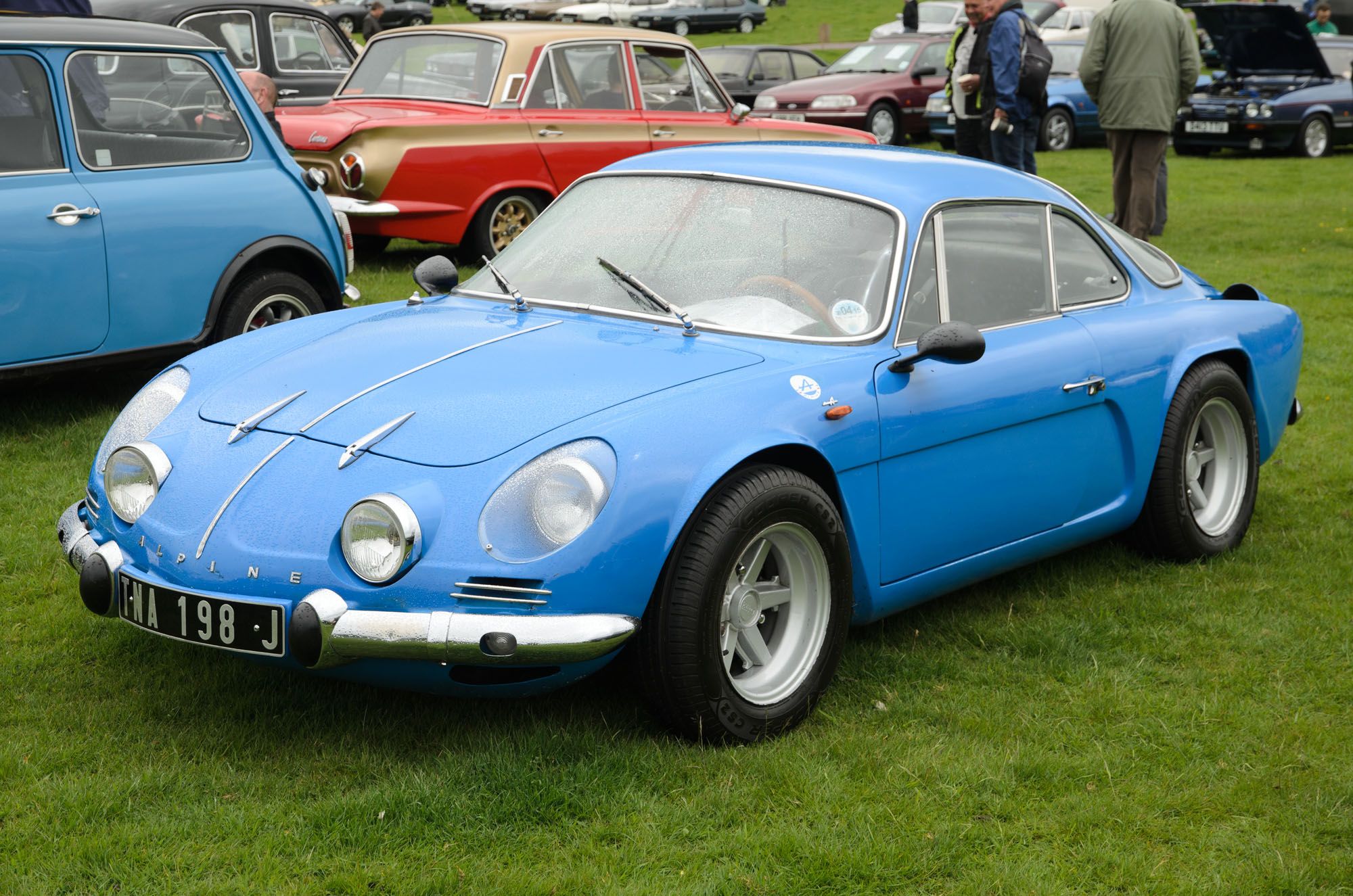
2. **Alpine A110**From an American icon, we jet across the pond to a European rally legend: the Alpine A110. The original ’60s car was nothing short of a rallying legend, famously ‘winning the first ever WRC event’. Its low-slung, lithe form and nimble handling made it an instant classic, and then, like so many greats, it slipped into the shadows, leaving a void in the hearts of driving enthusiasts for decades.
But fear not, because the A110 name was gloriously relaunched in 2016, bringing back that unique blend of performance and driver focus. While its predecessor was a pure rally machine, the modern A110 is ‘more of an all-rounder’, designed to carve corners on the road with an exhilarating precision. It cleverly ‘borrows parts from other Renault Group vehicles, including its engine’, demonstrating a smart approach to development.
However, it’s not just a parts-bin special. Oh no, not by a long shot! Its chassis and suspension were ‘uniquely designed with the help of British sports car maker Caterham’, ensuring that the critical components responsible for its sublime handling were bespoke and perfectly tuned. This clever mix of borrowing parts and designing only the most important bits helped keep costs down, putting it in a competitive position right alongside the formidable Porsche Cayman.
Under the hood, the A110’s engine might have ‘only a 1.8L displacement’, which might sound modest to some, but don’t let that fool you! It ‘has been cranked up to provide 300 horsepower’, proving that you don’t need monstrous displacement to have an absolute blast. Sadly for us across the Atlantic, ‘it isn’t available in America’, and thanks to the infamous 25-year import rule, ‘it will be a long while before Americans can bring one over’. Our hearts ache for that one.
In Europe, the car remains in production for now, a shining beacon of pure driving enjoyment. But, as with many internal combustion darlings, ‘upcoming electrification rules mean that its future is uncertain’. Whether it ultimately survives in its current form or not, the A110 is part of a rare breed of sports car that ‘focuses on driver enjoyment over power figures or technological party tricks’, and it absolutely deserves to be cherished and appreciated while it’s still gracing our roads with its presence.
Read more about: Revived Legends: Unpacking the Surprising Comebacks of Iconic Automotive Stars

3. **Lamborghini Countach**When you hear the name Countach, images of poster cars, wedge shapes, and a certain kind of outrageous Italian flair immediately spring to mind. Five decades after the original revolutionized supercar design, Lamborghini decided it was time for an encore, bringing back the Countach as ‘an ultra-limited special edition’ in 2022. It ‘borrowed design cues from the original’, making sure everyone knew its legendary lineage at a glance.
However, while it looked the part, it didn’t quite borrow the same heart. The original ’70s car was powered by a magnificent ‘4.0L V12 engine and later versions upped that displacement to as much as 5.2L’. A true symphony of raw power! The 2022 Countach, on the other hand, arrived with ‘a hybrid 6.5L V12 powertrain’. The combination of combustion and electric power resulted in ‘a total system output of 803 horsepower’, pushing the boundaries of modern hypercar technology.
This resurrected Countach is undeniably ‘a technologically impressive car’. With ‘only 112 examples produced’, it’s also ‘impressively rare, even by hypercar standards’. Owning one means joining an incredibly exclusive club, a testament to its allure and the brand’s ability to create instant collector’s items. It’s a statement, a piece of art, and a marvel of engineering, all rolled into one incredible machine.
Yet, for some purists, ‘it’s arguably not as groundbreaking as the original’. The first Countach, ‘which featured bodywork penned by Bertone and outlandish scissor doors that were unique for a production car at the time’, introduced an aesthetic that redefined what a supercar could be. Its successor, while powerful and exclusive, perhaps didn’t push the envelope quite as far in terms of sheer visual shock and awe. It’s a modern masterpiece, but the original was a revolution.
Nonetheless, the modern Countach was an undeniable hit with wealthy collectors, selling out instantly despite its stratospheric price tag. Although, interestingly, ‘it hasn’t held its value quite as well as some other ultra-rare hypercars’. Examples today ‘cost around $2 million’, which is ‘a notable drop from the reported $2.64 million retail price of the car back in 2022’. Still, a $2 million car that started at $2.64 million? That’s still a dream machine for 99.9% of us!
Car Model Information: 1986 Lamborghini Countach LP5000 Quattrovalvole
Name: Lamborghini Countach
Caption: Lamborghini Countach LP5000 QV
Manufacturer: Lamborghini
Production: 1974–1990
Assembly: Sant’Agata Bolognese
Designer: Marcello Gandini
Class: Sports car
BodyStyle: coupe
Layout: Longitudinal engine,mid-engine,rear-wheel-drive
Related: Lamborghini LM002
Engine: Lamborghini V12,V12 engine,LP400, LP400 S: {{cvt,3929,cc,L,1,disp=flip
Transmission: synchromesh,Manual transmission
Wheelbase: 96.46 in
Abbr: on (LP5000QV)
Order: flip
Length: 162.99 in
Width: LP 400: {{cvt,74.28,in,mm,0,abbr=on,order=flip
Height: 42.13 in
Weight: {{convert,1300.5,kg,lb,0,abbr=on
Predecessor: Lamborghini Miura
Successor: Lamborghini Diablo
Doors: Scissor doors
Sp: uk
Categories: 1980s cars, 1990s cars, All articles with unsourced statements, Articles containing Italian-language text, Articles containing Piedmontese-language text
Summary: The Lamborghini Countach ( KOON-tahsh) is a rear mid-engine, rear-wheel-drive sports car produced by the Italian automobile manufacturer Lamborghini from 1974 until 1990. It is one of the many exotic designs developed by Italian design house Bertone, which pioneered and popularized the sharply angled “Italian Wedge” shape.
The wedge style was introduced to the public in 1970 with the Lancia Stratos Zero concept car. The first showing of the Countach prototype was at the 1971 Geneva Motor Show, as the Lamborghini LP500 concept.
The “Countach” nameplate was reused for the Sián-based limited-production hybrid-electric model called the Countach LPI 800-4 in 2021.
Get more information about: Lamborghini Countach
Buying a high-performing used car >>>
Brand: Lamborghini Model: Countach
Price: $674,900 Mileage: 15,743 mi.
Read more about: Unlocking Hidden Value: 12 Classic Ferraris Automotive Experts Deem Undervalued for Astute Investment Portfolios

4. **GMC Hummer**Now, for something completely different, and perhaps one of the most unexpected automotive comebacks ever: the GMC Hummer! Let’s be real, the original Hummer’s image was pretty much synonymous with being ‘just about the most excessive gas-guzzling SUV available’. So, it’s safe to say that it was far from the most likely candidate to receive an all-electric successor. Yet, here we are, and we’re kind of loving the audacity of it!
More than a decade after the original Hummer H1, H2, and H3 were consigned to the archives, the GMC Hummer EV boldly launched in both truck and SUV forms. It’s a monster of a machine, a testament to what happens when engineers are given a blank check and told to make something outrageous. We even put it through its paces, and while it’s a spectacle, ‘we weren’t convinced that the latest Hummer’s real-world practicality — or rather, lack of it — justified its asking price’. There are, after all, many other six-figure super-SUVs out there that boast better on-road handling, family hauling capability, and high-end luxury features.
But here’s the kicker, and this is where the Hummer truly shines: ‘its unique selling point is that it doesn’t make any sense’, and that’s precisely why it’s so captivating! Its famous ‘crab walk feature’ — a mind-bending party trick that allows it to drive diagonally — and its gloriously oversized stature are pure spectacle. Aside from these features, ‘there isn’t really anything that makes the Hummer better than other, more mainstream electric SUVs and trucks’. Yet, evidently, those features alone are enough to seal the deal for plenty of buyers.
And seal the deal they have! GMC sold ‘almost 14,000 of these over-the-top off-roaders in 2024’, proving there’s clearly a sizeable market out there for what’s arguably ‘the most nonsensical EV on the market’. It’s loud, it’s proud, and it’s electric, challenging every preconceived notion of what an EV can be. The Hummer EV is a glorious, defiant middle finger to subtlety, and we wouldn’t have it any other way. Long live the electric brute!
Car Model Information: 2024 GMC HUMMER EV SUV 2X
Name: GMC Hummer EV
Caption: 2024 GMC Hummer EV3X (SUV)
Designer: Rick Scheer (director of design)
Powerout: 1000 hp
Abbr: on (SUV)
Battery: Ultium
Motor: Ultium Drive
ElectricRange: convert
Height: 79.1 in
Width: 86.46 in
Length: 196.8 in
Wheelbase: 126.7 in
Weight: Convert
Transmission: Single-speed
Related: Chevrolet Silverado EV,Cadillac Escalade IQ
Platform: General Motors BT1 platform
Predecessor: Hummer H2
Layout: Unbulleted list
BodyStyle: pickup truck
Class: Pickup_truck#Full-size_pickup_truck,Full-size SUV
Assembly: Detroit, Michigan
ModelYears: 2022–present
Production: November 2021 – present
Manufacturer: GMC (marque)
Sp: us
Charging: unbulleted list
Categories: All Wikipedia articles written in American English, All articles with unsourced statements, Articles with short description, Articles with trivia sections from November 2023, Articles with unsourced statements from April 2023
Summary: The GMC Hummer EV (badged as HEV) is a line of battery electric heavy-duty vehicles produced by General Motors since 2021, and sold under the GMC mark. The Hummer EV is offered in two variants: a pickup truck and a sport utility vehicle (SUV), unveiled in October 2020 and April 2021 respectively.
Weighing roughly 10,000 pounds (4,500 kg), the Hummer EV is among the heaviest consumer automobiles currently sold in the United States. Its size, mass, and acceleration have led to concerns regarding the danger it poses to other users on the road in the event of a collision, as well as its efficiency and environmental affects.
Get more information about: GMC Hummer EV
Buying a high-performing used car >>>
Brand: GMC Model: Hummer
Price: $99,997 Mileage: 1,222 mi.
Read more about: General Motors: Deciphering a Century of Automotive Milestones, Innovations, and Challenges for the Informed Consumer

5. **BMW 8-Series**Ah, the BMW 8-Series. For a certain generation of enthusiasts, the original, ‘hitting American dealerships for the 1990 model year’, was an absolute high water mark for the brand. It was a grand tourer that blended luxury, performance, and groundbreaking technology like few before it. Mechanically, it was a marvel, ‘being only the second ever BMW model to feature a V12 engine’. Visually, ‘it was unprecedented, with a sleeker design than anything else in the brand’s lineup at the time’. It was the future, sculpted into glorious metal.
The most desirable variant of the original 8-Series, the 850CSi, remains a highly sought-after collector’s car today. Its timeless design, coupled with that magnificent V12, ensures its legendary status. ‘Average resale values hovering close to $100,000 today’ is a clear indicator of its enduring appeal and its place in the pantheon of classic BMWs. It’s the kind of car that makes you stop and stare, even decades later.
Fast forward to its revival, and while the resurrected 8-Series doesn’t have a V12 under its hood — a minor point of contention for some purists, perhaps — it does have something that the original never received: ‘an M-badged variant’. We’re talking about pure, unadulterated M Division madness wrapped in a sophisticated grand tourer package. The M8 Competition Coupe is a beast in a tuxedo, delivering exhilarating performance with supreme elegance.
‘We spent some time with the current generation M8 Competition Coupe back in 2020 and it grabbed as much attention as many of the most sought-after Italian supercars’, especially when sporting a brightly colored paint scheme, it’s a total head-turner. ‘It’s certainly as distinctive, luxurious, and pricey as the original’, carrying on that legacy with aplomb. Even without the glorious twelve-cylinder engine, the modern 8-Series proves that BMW can still craft a high-performance luxury coupe that captures hearts and dominates roads. It’s a fitting tribute to its legendary forebear, and a brilliant machine in its own right!
Alright, gearheads and automotive aficionados, prepare yourselves for the next wave of legends that have defied the odds! We’ve already celebrated some truly epic comebacks, but the automotive world is a vast and wondrous place, filled with even more stories of iconic machines rising from the ashes. These are the cars that etched themselves into our collective memory, disappeared, and then, against all expectations, roared back onto the scene, better and bolder than ever! Let’s dive deeper into these incredible tales of resurrection.
Read more about: The Perils of Prestige: 15 Luxury Models Buyers Would Unbuy for Superior Reliability
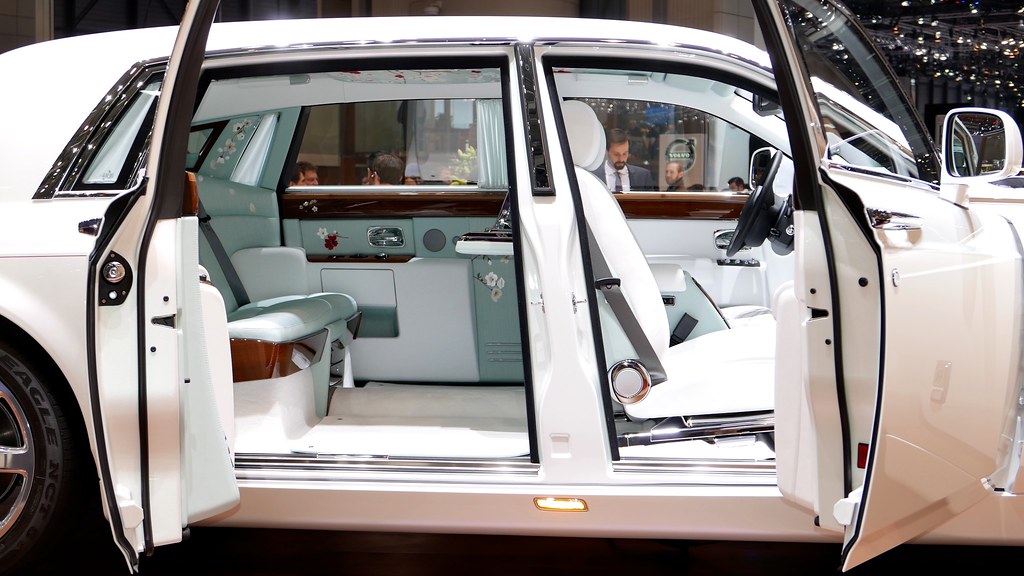
6. **Rolls-Royce Phantom**Rolls-Royce is celebrating the 100th anniversary of the Phantom nameplate in 2025, a century of unparalleled luxury and prestige! It was originally coined to distinguish the brand’s high-end car from its other supernatural-themed offering, the Silver Ghost. This wasn’t just any car; it was a rolling statement, a symbol of ultimate opulence and an instant icon, destined for a legendary journey through automotive history.
The Phantom had its share of dramatic hiatuses, proving that even the most regal vehicles face life’s interruptions. It was temporarily discontinued during the Second World War, only to be brought back as an ultra-exclusive model for the British Royal family. This fourth-generation Phantom is exceptionally rare, with only 18 examples ever built, making it an automotive unicorn, a true jewel in the crown of collector’s cars.
Later, the Phantom V, launched in 1959, was once again made available for public sale, though its astronomical price ensured only the wealthiest businesspeople and heads of state could afford one. It graced the roads for more than a decade before being replaced by the Phantom VI. This would turn out to be the last generation before its second, decade-long discontinuation. According to Rolls-Royce, the last Phantom VI was built in 1993 and delivered to the Sultan of Brunei, a truly grand farewell.
But you simply can’t keep a good legend down! The nameplate was eventually retired, only to be gloriously brought back to spearhead the brand’s 2003 relaunch under BMW ownership. The Phantom VII was a dramatically different beast altogether, sporting modern styling and a sophisticated spaceframe chassis. Yet, it remained every bit as opulent as its predecessors, proving to be an instant hit with discerning buyers who craved that unparalleled Rolls-Royce experience.
The latest generation, the Phantom VIII, was unveiled in 2017 and is still very much in production today, continuing a magnificent legacy of automotive excellence. And true to its heritage, like all Phantoms before it, it doesn’t come cheap, with prices starting north of $500,000 and easily stretching far higher with custom commissions. It’s not just a car; it’s a mobile palace, an icon triumphantly reborn!
Read more about: You Won’t Believe What These 15 Celebrities Bought on a Whim (Hint: It’s Wildly Expensive!)

7. **Fiat 500**Ah, the Fiat 500! When this charming little car first launched in 1957, it wasn’t an overnight sensation, believe it or not. Surprisingly, it initially struggled to gain as much traction as its larger, more competitively priced sibling, the 600. But Fiat, being the clever and persistent folks they are, weren’t about to give up on their plucky compact.
They smartly reworked the car, blessing it with better equipment, a touch more power, and a more appealing, lower price. And just like that, its popularity soared massively throughout the 1960s! It was the perfect car at the perfect time, providing stylish, affordable transport for cash-strapped Italians. Its unique, iconic styling, which remained largely unchanged throughout its production run, became instantly recognizable and utterly beloved worldwide.
By the time the 500 was finally discontinued in 1975, making way for the 126, an astounding 3.8 million examples of the car had been lovingly built. That’s a serious legacy for such a diminutive car! The 500 nameplate then lay dormant for decades, leaving a void for fans of micro-mobility and charming, efficient design.
But the world wasn’t ready to forget its adorable face, and Fiat wisely revived the nameplate in 2007. Just like the original, the reborn car featured that same distinctive styling, a modest yet peppy powertrain, and an accessible low starting price. This time, however, it was a commercial smash hit in Europe right from launch, capturing hearts all over again! Fiat proudly announced in 2019 that they had sold over three million examples of this new generation car.
Unfortunately, things hit a snag when the brand made the controversial decision to axe the gas-powered 500 in favor of the all-electric 500e. Demand, predictably, slumped significantly, leading Fiat to even pause production of the car in late 2024. But fear not, little 500 fans! Fiat has since reversed course and plans to relaunch the beloved 500 as a hybrid in late 2025. This plucky little car truly has nine lives!
Car Model Information: 2012 FIAT 500 Lounge
Name: Fiat 500
Caption: 1970 Fiat 500 L
Aka: Puch 500
Manufacturer: Fiat Automobiles
Production: 1957–1975,3,893,294 units
Assembly: Turin,Desio
Designer: Dante Giacosa
Class: City car
BodyStyle: ubl
Layout: Rear-engine, rear-wheel drive layout
Doors: Suicide door,Car door#Conventional
Related: Autobianchi Bianchina,NSU/Fiat Weinsberg 500,Vignale Gamine,Autobianchi Giardiniera
Engine: Cubic centimetre,499 cc I2,594 cc I2
Transmission: Manual transmission
Wheelbase: {{convert,1840,mm,in,1,abbr=on
Abbr: on
Length: 2970 mm
Width: 1320 mm
Height: 1320 mm
Weight: 499 kg
Predecessor: Fiat 500 “Topolino”
Successor: Fiat 126,Fiat 500 (2007)
Sp: uk
Categories: 1960s cars, 1970s cars, All Wikipedia articles written in British English, All articles with unsourced statements, Articles containing Italian-language text
Summary: The Fiat 500 (Italian: Cinquecento, pronounced [ˌtʃiŋkweˈtʃɛnto]) is an economy / city car that was manufactured and marketed by Fiat Automobiles from 1957 until 1975. It was sold as a two-door semi-convertible or saloon car and as a three-door panel van or estate car.
Launched as the Nuova (new) 500 in July 1957, as a successor to the 500 “Topolino”, it was an inexpensive and practical small car. Measuring 2.97 metres (9 feet 9 inches) long, and originally powered by a rear-mounted 479 cc two-cylinder, air-cooled engine, the 500 was 24.5 centimetres (9.6 inches) smaller than Fiat’s 600, launched two years earlier, and is considered one of the first purpose-designed city cars.
In 1959, Dante Giacosa received a Compasso d’Oro industrial design prize for the Fiat 500. This marked the first time a Compasso d’Oro was awarded to an automotive manufacturer.
Get more information about: Fiat 500
Buying a high-performing used car >>>
Brand: FIAT Model: 500
Price: $5,950 Mileage: 91,698 mi.
Read more about: Gear Up for Goodbye: 7 Beloved Models Waving Farewell to Manual Transmissions in 2025

8. **Honda/Acura NSX**The Honda NSX, or Acura NSX as it’s known here in America, is a truly special machine that has graced our roads, disappeared, and then reappeared, not once, but twice! Its debut in 1989 caused an absolute sensation in the automotive world. It handled unlike anything else on the market at the time, boasted that legendary Japanese reliability we’ve come to expect from Honda, and yet, it could be driven comfortably at everyday speeds.
This first-generation NSX wasn’t just a pioneer for Honda; it was a game-changer for the entire supercar segment. It redefined what a supercar could be: exotic performance without the temperamental quirks and eye-watering maintenance costs of its European rivals. However, as the Japanese economic bubble burst, Honda found itself lacking the spare funds needed to keep developing such an advanced vehicle. By the time it was ultimately discontinued, it was no longer the unique, market-beating supercar it had once been, a sad end for such an innovator.
But the story didn’t end there! Honda brought the NSX back for a thrilling second generation in 2016, once again promising a distinctively Japanese take on the supercar formula. And they delivered! Here was a car that was practical for daily driving, easy to live with, yet still blisteringly fast enough to keep pace with the most glamorous European exotica when the mood struck. It truly offered the best of both worlds, a hybrid marvel.
Despite its incredible capabilities and innovative hybrid powertrain, much like the original, it never quite sold in the massive numbers Honda might have hoped for. So, in 2022, it was given a fitting send-off with the launch of the special NSX Type S, a bittersweet moment for enthusiasts. It seems some legends are destined to be rare gems, appreciated by a passionate few, rather than mass-market marvels.
But hold your horses, because the NSX story might not be over yet! There are exciting reports that a new, all-electric successor is already in the works, set to debut later in the decade. For now, further details remain sparse, but the idea of an electric NSX carrying on that legacy of innovation and performance is enough to make any gearhead’s heart race with anticipation. We’re eagerly waiting to see what Honda cooks up next!
Read more about: Revived Legends: Unpacking the Surprising Comebacks of Iconic Automotive Stars
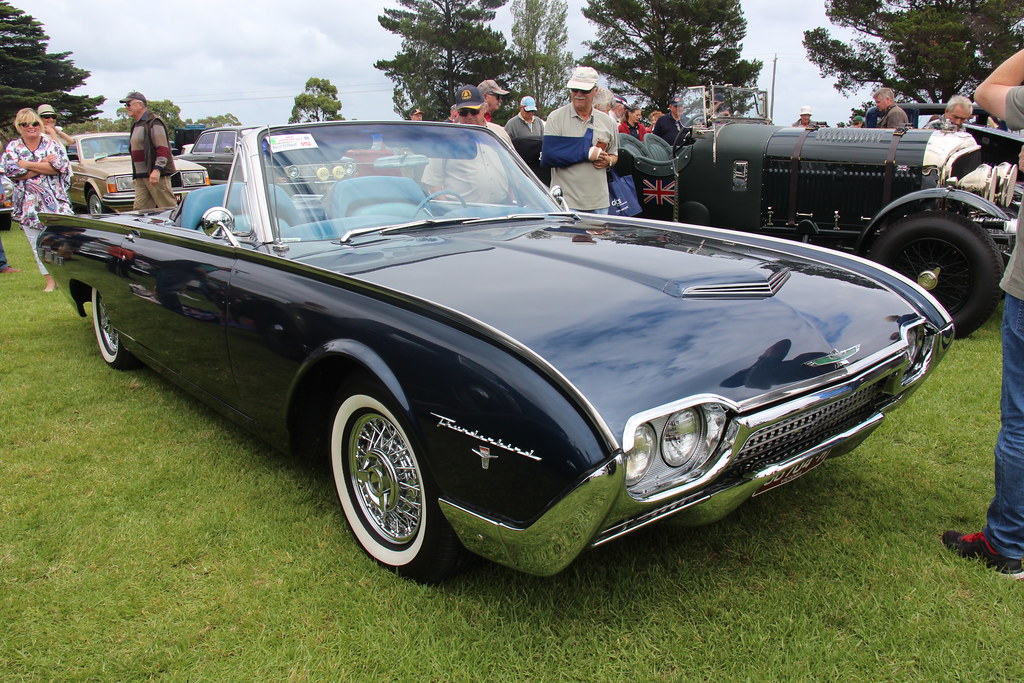
9. **Ford Thunderbird**The Ford Thunderbird has a truly storied history, full of exhilarating peaks and regrettable valleys, and its most recent comeback definitely falls into the “mixed bag” category for many enthusiasts. The original production run of this classic American icon finally came to an end in 1997, when the tenth generation gracefully departed the automotive stage. The nameplate then sat unused for a few years, leaving a gaping hole in Ford’s lineup for a stylish, personal luxury car.
Then, much to the delight of retro enthusiasts, Ford decided to reignite the flame, launching a new generation of the Thunderbird with gorgeous retro styling and, surprisingly, Jaguar underpinnings! Talk about a bold, cross-continental move! At its launch, this reborn ‘Bird generated a tremendous amount of attention and enjoyed a period of genuinely decent sales. Everyone was eager to see if this nostalgic revival would soar to new heights.
Critical reviews were initially overwhelmingly positive, with the prestigious MotorTrend even showering it with praise by naming it their coveted Car of the Year in 2002. In its very first year, Ford managed to shift almost as many Thunderbirds as Chevy did Corvettes, which was a huge achievement and a testament to its initial appeal and the successful tapping into that retro zeitgeist.
However, the honeymoon period was tragically short-lived. By 2003, sales figures had plummeted to around a dismal 50% of the previous year’s impressive numbers. The once-celebratory press also, rather brutally, turned on the car, with Car and Driver later famously, and painfully, calling the Thunderbird one of its “most embarrassing award winners.” Ouch, that’s got to sting!
There was simply no coming back from such a disastrous slump in both sales and critical acclaim. The dream was over, and the Thunderbird, sadly, was axed once again in 2005. It stands as a stark reminder that while nostalgia can be a powerful force, meticulous execution and sustained appeal are absolutely critical to the long-term success of any automotive resurrection, no matter how iconic the nameplate.
Car Model Information: 1966 Ford Thunderbird Base
Name: Ford Thunderbird
Caption: 1957 Thunderbird
Manufacturer: Ford Motor Company
Production: unbulleted list
ModelYears: unbulleted list
Class: unbulleted list
Layout: Front-engine, rear-wheel drive layout
Categories: 1960s cars, 1970s cars, 1980s cars, 1990s cars, 2000s cars
Summary: The Ford Thunderbird is a personal luxury car manufactured and marketed by Ford Motor Company for model years 1955 to 2005, with a hiatus from 1998 to 2001.
Ultimately gaining a broadly used colloquial nickname, the T-Bird, the model was introduced as a two-seat convertible, subsequently offered variously in a host of body styles including as a four-seat hardtop coupe, four-seat convertible, five-seat convertible and hardtop, four-door pillared hardtop sedan, six-passenger hardtop coupe, and five-passenger pillared coupe, before returning in its final generation, again as a two-seat convertible.
At its inception, Ford targeted the two-seat Thunderbird as an upscale model. The 1958 model year design introduced a rear seat and arguably marked the expansion of a market segment that came to be known as personal luxury cars, positioned to emphasize comfort and convenience over handling and high-speed performance.
Get more information about: Ford Thunderbird
Buying a high-performing used car >>>
Brand: Ford Model: Thunderbird
Price: $44,999 Mileage: 71,017 mi.
Read more about: The Essential 2025 Paint Color Guide for Home Sellers: Boost Your Sale Price & Attract Buyers
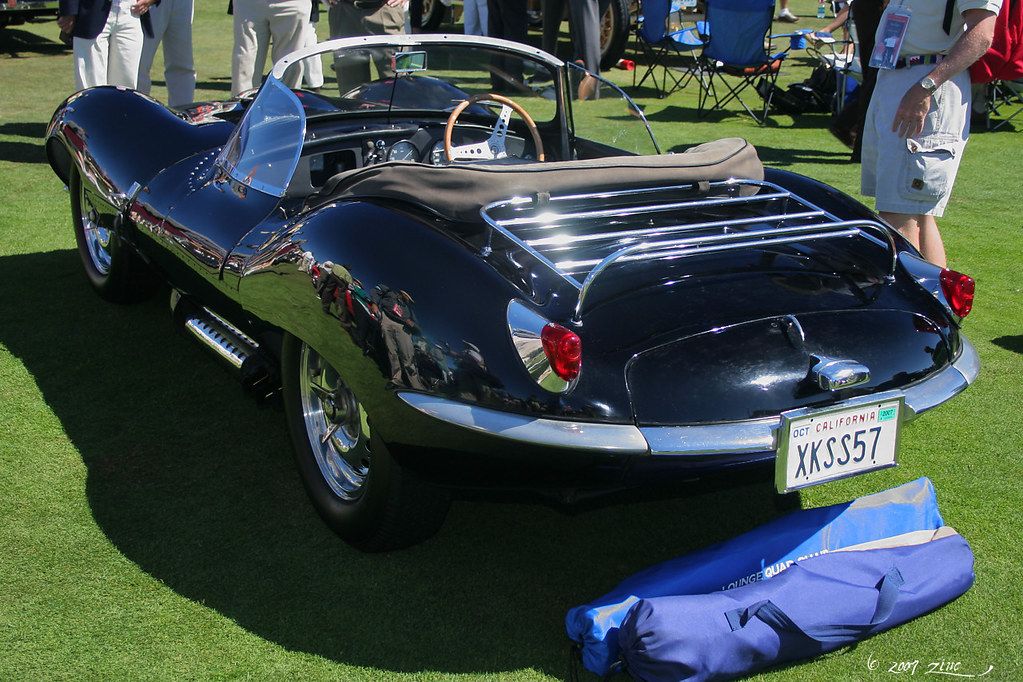
10. **Jaguar XKSS**Now, for a tale of resilience and rebirth that’s almost mythical: the Jaguar XKSS. This isn’t just a car; it’s a living legend with a dramatic past, rooted in the very pinnacle of 1950s sports car engineering. Its story takes a tragic turn with a factory fire in 1967, which devastatingly saw nine of the original 25 Jaguar XKSS road cars completely destroyed. This heartbreaking event left the total production run at a mere 16 cars in 1967, instantly elevating the surviving examples to an extraordinarily rare and almost priceless status.
For decades, those lost nine remained just that: lost, a poignant ‘what if’ in the minds of Jaguar connoisseurs worldwide. However, in a move that sent shivers of excitement and disbelief through the classic car world, Jaguar announced in 2016 that it was undertaking the monumental task of rebuilding the final nine cars. This wasn’t a simple reproduction or a tribute model; it was a meticulous, no-expense-spared recreation. The team dove deep into archival records and original blueprints, using a brilliant mix of modern craftsmanship and classic construction methods to ensure absolute fidelity.
Each one of these “new original” XKSS models was designed to be as period correct as humanly possible, down to the last rivet, the precise stitching of the leather, and the exact shade of paint, ensuring an authenticity that honored the original machines in every conceivable way. These stunning vehicles were destined for a handful of incredibly fortunate and deeply passionate collectors, bringing a tangible, roaring piece of automotive history back from the brink of oblivion. It’s a powerful testament to Jaguar’s unwavering commitment to its heritage and the enduring, almost magnetic desirability of one of its most iconic, and tragically rare, creations. The resurrection of these nine cars wasn’t just about building vehicles; it was about restoring a vital, thrilling chapter of automotive folklore.
Read more about: Beyond the Stage: An Exclusive Look Inside Jay Leno’s Multi-Million Dollar Automotive Sanctuary
And there you have it, folks! What a ride through the annals of automotive history, celebrating the indomitable spirit of these cherished machines. From unexpected electric brutes to precision-engineered rally legends and ultra-luxurious grand tourers, each comeback story is a testament to the enduring power of design, engineering, and, most importantly, the unwavering passion of car enthusiasts like us. It just goes to show that some legends are too powerful, too beloved, and too darn cool to ever truly fade away. Here’s hoping the trend of automotive resurrection continues, bringing even more unforgettable rides back into our lives! Keep those engines revving, because you never know which icon will be roaring back next!



